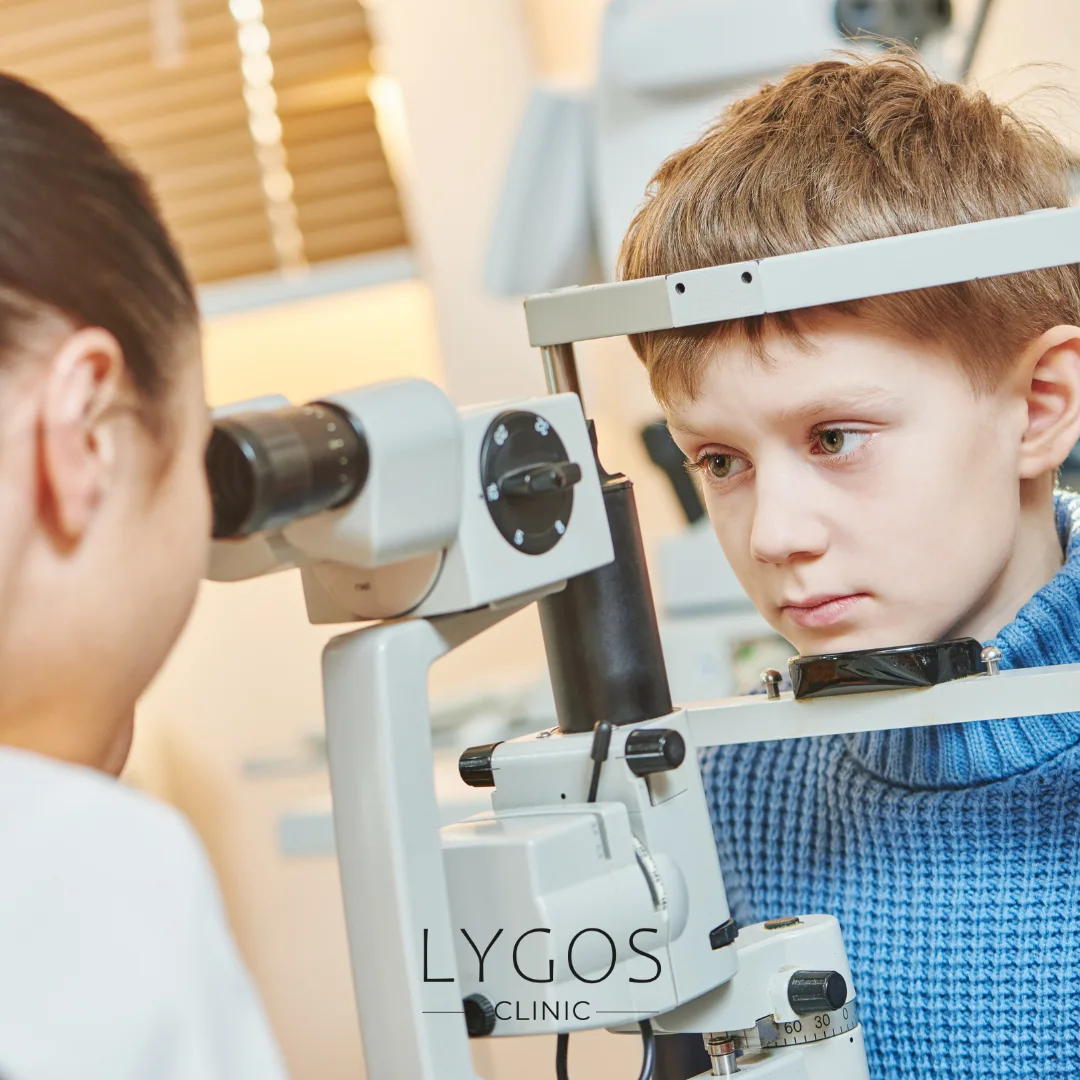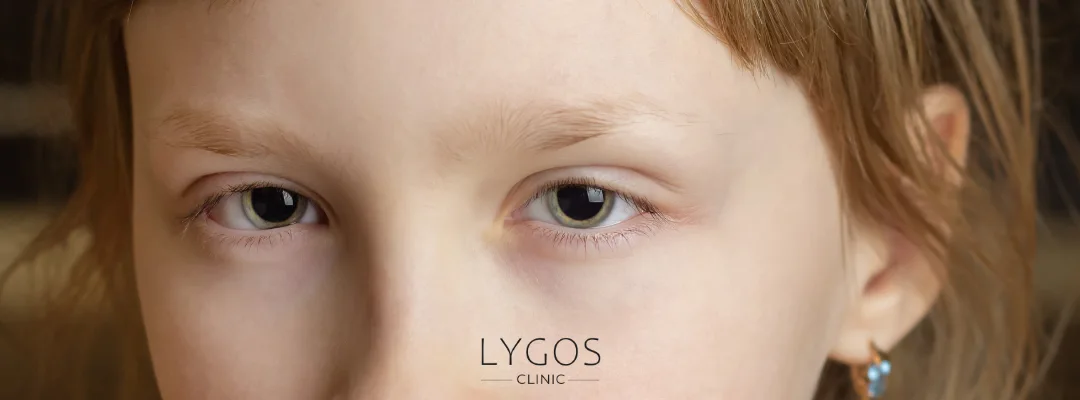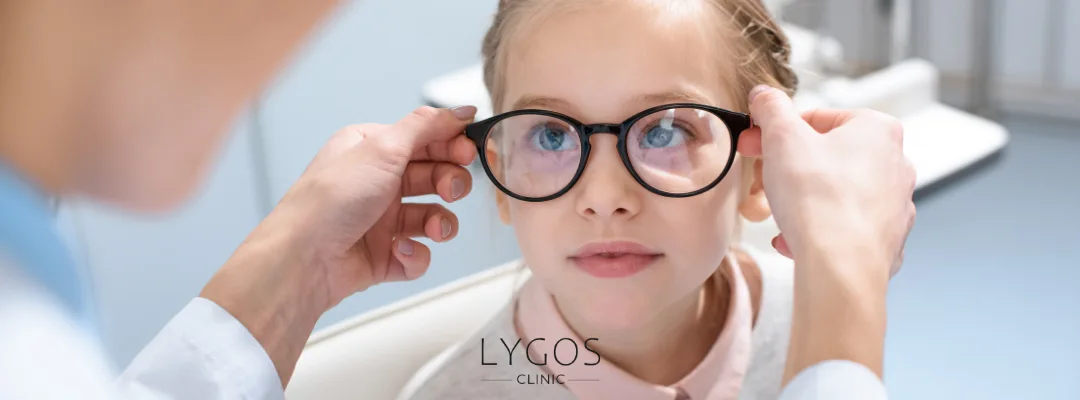Children’s Eye Diseases | Myopia, Hyperopia, and Astigmatism in Children

Chose Your Topic
Children’s Eye Diseases
Eyes are one of the most important organs in understanding the world around us. Especially in children, eye health plays a critical role during their developmental process. If children’s eye diseases are not detected and treated early, they can lead to permanent vision problems. Therefore, it is very important for parents to pay attention to their children’s eye health. In this article, we will discuss the most common children’s eye problems, examination methods, and treatment options in detail.

What Are the Most Common Eye Diseases in Children?
The most frequently encountered children’s eye diseases include myopia (difficulty seeing distant objects clearly), hyperopia (difficulty seeing close objects clearly), astigmatism (blurred vision), strabismus (misalignment of the eyes), and amblyopia (lazy eye). Additionally, congenital cataracts, glaucoma, and infections may also occur.
- Myopia: Usually increases during school age, characterized by a shortened distance of clear vision.
- Hyperopia: Inability to see nearby objects clearly, especially common in newborns.
- Astigmatism: Due to irregular shape of the eye surface, causing blurred vision both near and far.
- Strabismus: A problem with eye alignment where one eye looks in a different direction.
- Amblyopia (Lazy Eye): One eye sees less compared to the other and is underused by the brain.
With early diagnosis and treatment, most of these diseases can be successfully managed. Therefore, regular eye exams for children are essential.
When and How Should Children Have Eye Exams?
Because children’s eye diseases can appear early, eye exams should not be neglected. The first exam is usually done in the newborn period and followed up with routine check-ups as the child grows. Exams at preschool age (3-5 years) and school age (6 years and older) are particularly important.
- Visual acuity tests (using age-appropriate methods)
- Checking eye muscles and movements
- Determining the need for glasses
- Examining the retina
- Measuring eye pressure (especially in high-risk cases)
Children’s eye diseases often progress silently, so parents should observe signs such as eye drifting, tearing, or light sensitivity and consult a doctor early.

The Importance of Nutrition for Children’s Eye Health
Proper nutrition is vital to reduce the risk of children’s eye diseases and maintain eye health. Certain vitamins and minerals are necessary for healthy eye development:
- Vitamin A: Critical for eye health; found in carrots, spinach, sweet potatoes.
- Vitamin C and E: Antioxidants that protect eye tissues.
- Zinc and Omega-3 Fatty Acids: Support retinal health.
A balanced, vitamin-rich diet reduces the risk of eye diseases. Limiting screen time and encouraging outdoor activities also positively contribute to eye health.
What Are Myopia, Hyperopia, and Astigmatism in Children?
Refractive errors like myopia, hyperopia, and astigmatism are common in children and occur due to defects in the eye’s light-bending ability.
- Myopia (Nearsightedness): When the eye’s front-to-back length is too long, light focuses in front of the retina, making distant objects blurry.
- Hyperopia (Farsightedness): When the eye’s front-to-back length is too short, light focuses behind the retina, making close objects blurry.
- Astigmatism: Due to abnormal curvature of the cornea or lens, causing blurred vision at all distances.
These conditions are usually corrected easily with glasses. Early diagnosis and treatment are essential to prevent complications like amblyopia.

Strabismus in Children and Treatment Methods
Strabismus affects both vision quality and appearance, where the eyes are misaligned and look in different directions. Causes include muscle imbalance, refractive errors, and neurological issues.
Treatment options include:
- Glasses: To correct refractive errors in some types of strabismus.
- Patching Therapy: Covering the stronger eye to prevent amblyopia.
- Exercises and Prisms: To strengthen eye muscles.
- Surgery: To align the eye muscles if necessary.
Early treatment can largely correct strabismus and prevent permanent vision loss.
Symptoms and Treatment of Amblyopia (Lazy Eye)
Amblyopia is a common childhood eye disease where the brain does not adequately use visual information from one eye. Symptoms include poor vision in one eye, weak depth perception, and sometimes double vision.
Treatment methods:
- Patching: Covering the stronger eye to stimulate the weaker eye.
- Glasses: To correct refractive errors.
- Eye Exercises: To improve eye muscles and brain-eye coordination.
The earlier the treatment starts, the better the success. Interventions before ages 7-8 are most effective.
Children’s eye diseases can largely be prevented and managed with early diagnosis and treatment. Parents should care for their children’s eye health, ensure regular eye exams, and promote healthy habits. Knowing about common diseases like myopia, hyperopia, astigmatism, strabismus, and amblyopia is critical for timely intervention. If you have any concerns about eye health, be sure to consult a specialist ophthalmologist.
Children’s Eye Diseases Frequently Asked Questions (FAQ)
The first exam should be done in the newborn period, followed by exams around age 3 and again at school entry (age 6). If risk factors or vision problems exist, more frequent check-ups may be needed.
Besides genetic factors, increased screen time, less outdoor activity, and prolonged close-up work cause eye strain and contribute to myopia progression.
Some minor, temporary cases may improve naturally, but persistent strabismus requires treatment. Early intervention prevents vision problems.
If one eye sees less than the other, depth perception is poor, or the child resists patching, amblyopia may be present. A doctor will make the definitive diagnosis.
No, properly prescribed glasses correct vision and prevent problems like amblyopia.



